Punjab - Culture - Turbans
The turban is commonly associated with India, because of the popular belief that most Indians wear turbans- which is not true. Hardly 10% of the total male population of India may be wearing turbans regularly. Again, in India, Sikhs constitute only 1.8% of the total population and as such any turbanned Indian you see behind the plough or in the street is not necessarily a Sikh.
Although essentially religious, the Sikh Turban, in practical terms, is not without merits. The turban is, comparatively more hygenic than the year-old hat/cap which is difficult to wash clean. It is made up of fine muslin (cotton) which is kept clean with the usual weekly washing.
 |
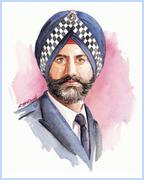 |
 |
The Turban is always a made-to-measure thing. That is- it fits the contour or shape of the head, and so is more comfortable than the 'ready-made' or factory made hats which are usually the same shape for all differently featured heads.
Contrary to what many people think, the Turban is light (few ounces only) and soft on the head, but its cushion like appearance may give the wrong impression of its being bulky or heavy. It is ideal headgear for both winter and summer. Even in icy winds it keeps the head and ears cosy and comfortable, while under the hot, perspiring sun it has also more utility than many people would think, or have thought about.
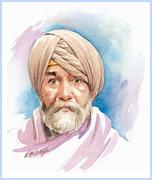 |
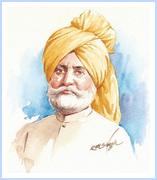 |
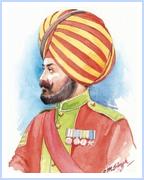 |
For variety and taste, there is a choice of colours. Match it with your suit, shirt, or necktie, there is no restriction to any colour. However, blue and white are particular favourites with certain Sikhs; e.g. white with Sikhs from East Africa and dark blue with 'Akalis'- a reigio-politico organisation of the Sikhs.
Learning and mastering to tie the Turban is a gentle and natural process from children to adults. Usually, a child of 8 or 10 years of age acquires the initial skill in making his own turban; to him it is perhaps as easy or as difficult as tying up his necktie unaided by his parents.
 |
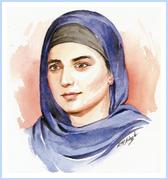 |
Usually an adult Sikh Turban is five to seven meters long and one meter wide. This length is smoothly turned around the head six times (rounds) by clockwise movements of the hands. Both ends of the 'length' or the turban must be tucked in properly- i.e. the
beginning or finishing ends of the turban should not be flowing loosely as can
be seen with many non-Sikh Indian turbans.
Most Sikhs prefer to wear another small under-turban as well. This under-turban may be kept at bed-time as well, when the turban proper is taken off. Similarly, during swimming and sports, the Turban is replaced by a small scarf called 'PATKA' or handkerchief which is knotted at the top to keep the hair intact. In fact PATKA is becoming more popular with young Sikhs at school.
